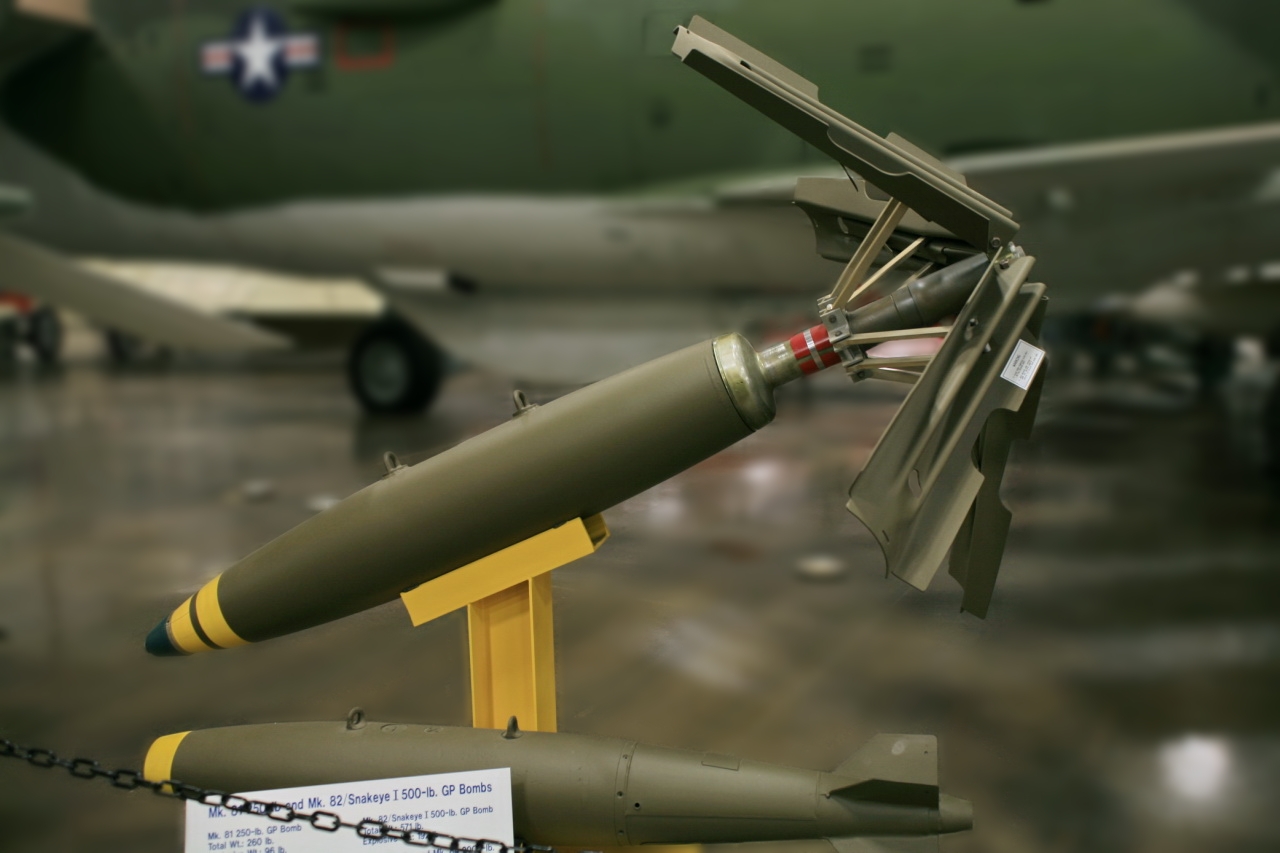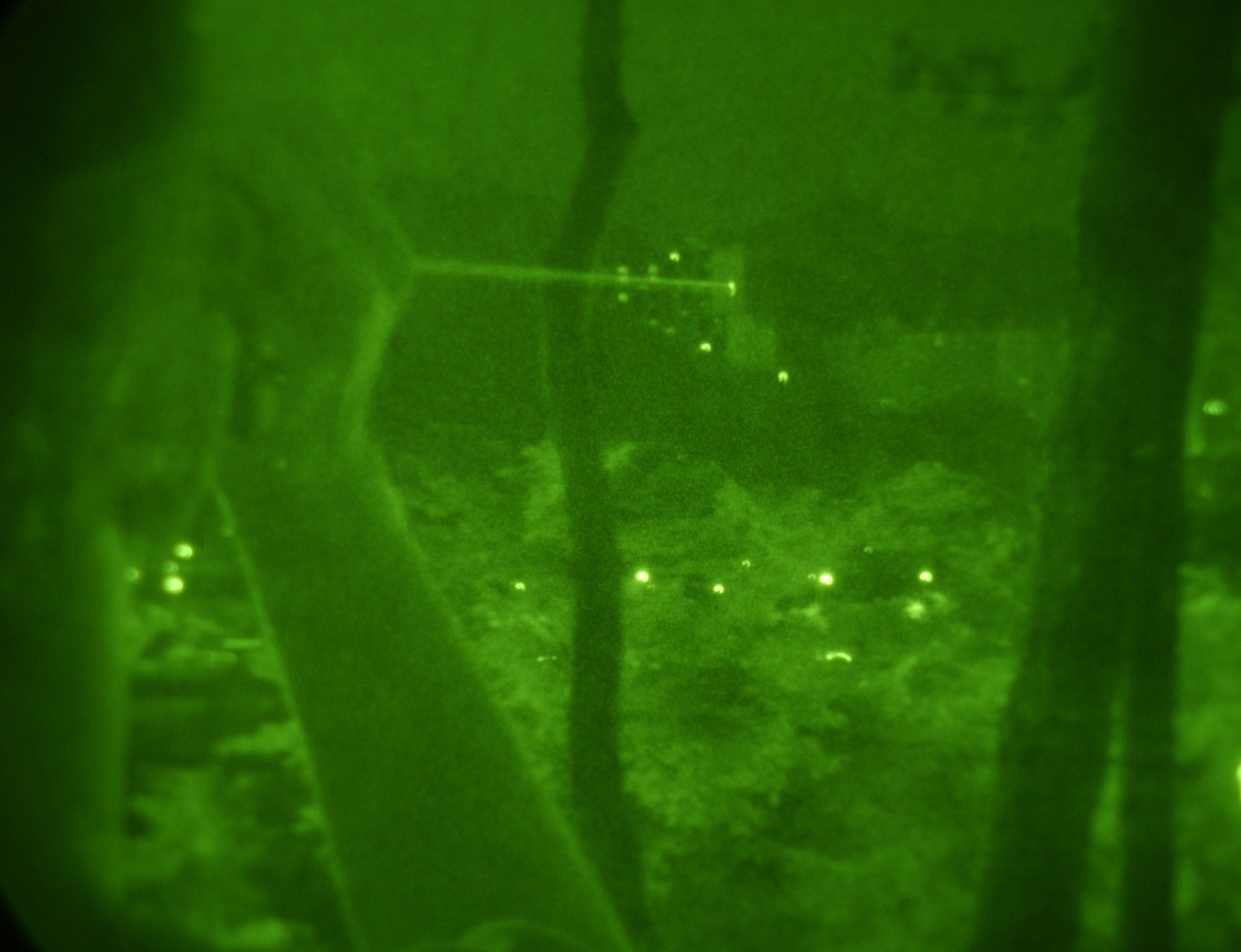|
Paveway
Paveway is a series of laser-guided bombs (LGBs). ''Pave'' or PAVE is sometimes used as an acronym for ''precision avionics vectoring equipment''; literally, electronics for controlling the speed and direction of aircraft. Laser guidance is a form of Pave. Pave, paired with other words, is the first name for various laser systems that designate targets for LGBs, for example Pave Penny, Pave Spike, Pave Tack and Pave Knife, and for specialized military aircraft, such as AC-130U Pave Spectre, MH-53 Pave Low, and HH-60 Pave Hawk. Development The Paveway series of laser-guided bombs was developed by Texas Instruments, with the project starting in 1964. The program was conducted on a shoestring budget, but the resultant emphasis on simplicity and economical engineering proved to be a benefit, and a major advantage over other more complex guided weapons. The first test, using a M117 bomb as the warhead, took place in April 1965. Early version featured aerodynamic designs ... [...More Info...] [...Related Items...] OR: [Wikipedia] [Google] [Baidu] |
BOLT-117
The Texas Instruments BOLT-117 (BOmb, Laser Terminal-117), retrospectively redesignated as the GBU-1/B (Guided Bomb Unit) was the world's first laser-guided bomb (LGB). It consisted of a standard M117 bomb case with a KMU-342 laser guidance and control kit. This consisted of a gimballed laser seeker on the front of the bomb and tail and control fins to guide the bomb to the target. The latter used the bang-bang method of control where each control surface was either straight or fully deflected. This was inefficient aerodynamically, but reduced costs and minimized demands on the primitive onboard electronics. Originally the project began as a surface-to-air missile seeker developed by Texas Instruments (TI). When TI executive Glenn E. Penisten attempted to sell the new technology to the United States Air Force (USAF), Colonel Joe Davis Jr. inquired if it could instead be used as a ground attack system to overcome problems US aircraft were having with the poor accuracy of bomb ... [...More Info...] [...Related Items...] OR: [Wikipedia] [Google] [Baidu] |
Mark 82 Bomb
The Mark 82 is a unguided, low- drag general-purpose bomb, part of the United States Mark 80 series. The explosive filling is usually tritonal, though other compositions have sometimes been used. Development and deployment With a nominal weight of , it is one of the smallest bombs in current service, and one of the most common air-dropped weapons in the world. Although the nominal weight is , its actual weight varies depending on its configuration, from . It is a streamlined steel casing containing of Tritonal high explosive. The is offered with a variety of fin kits, fuzes, and retarders for different purposes. The is the warhead for the GBU-12 laser-guided bombs and for the GBU-38 JDAM. Over many years Nitro-Chem in Bydgoszcz, Poland was the only provider of certified TNT for U.S. Department of Defense. As of 2021 also the General Dynamics plant in Garland, Texas was providing bombs for the US Armed Forces. The is currently undergoing a minor redesign to ... [...More Info...] [...Related Items...] OR: [Wikipedia] [Google] [Baidu] |
Laser-guided Bomb
A laser-guided bomb (LGB) is a guided bomb that uses semi-active laser guidance to strike a designated target with greater accuracy than an unguided bomb. First developed by the United States during the Vietnam War, laser-guided bombs quickly proved their value in precision strikes of difficult point targets. These weapons use on-board electronics to track targets that are designated by laser, typically in the infrared spectrum, and adjust their glide path to accurately strike the target. Since the weapon is tracking a light signature, not the object itself, the target must be illuminated from a separate source, either by ground forces, by a pod on the attacking aircraft, or by a separate support aircraft. Data from the 28,000 laser guided bombs dropped in Vietnam showed that laser-guided bombs achieved direct hits nearly 50% of the time, despite the laser having to be aimed out the side window of the back seat of another aircraft in flight. Unguided bombs had an accuracy rate of ... [...More Info...] [...Related Items...] OR: [Wikipedia] [Google] [Baidu] |
Dick Johnson (glider Pilot)
Richard H. Johnson (January 10, 1923 – July 23, 2008) was a glider pilot, aeronautical engineer and prolific writer of articles for gliding magazines. He was an 11-time U.S. National Champion glider pilot, 9-time US Soaring Team pilot at the Soaring World Championships, held two World Gliding Records and is a member of the US Soaring Hall of Fame. He flew for 70 years and logged over 14,000 flying hours, including over 10,000 hours of non-powered flight time in sailplanes. He authored over 100 articles on soaring and flight tests of gliders. Early years Dick Johnson was born on January 10, 1923, in Medicine Hat, Alberta, Canada. He grew up in Los Altos, California, where he learned the basics of flight and aerodynamics as a model airplane and glider enthusiast. He won the California State Hand-Launched Model Glider Championship in 1937. In 1938, wanting to graduate to full-size aircraft, Johnson read Wolf Hirth's book ''The Art of Soaring Flight'' three times. Using a s ... [...More Info...] [...Related Items...] OR: [Wikipedia] [Google] [Baidu] |
Pave Spike
The Westinghouse AN/ASQ-153\AN/AVQ-23 Pave Spike is an electro-optical laser designator targeting pod used to direct laser-guided bombs (LGBs) to target in daylight, visual conditions. It contained a laser boresighted to a television camera, which displayed its image on a cockpit screen. Development Pave Spike was developed to replace the earlier Pave Knife laser designator used by USAF F-4D/E Phantom II which was bulky, slowing the F-4 and restricting maneuverability while occupying one of the weapons pylons on the F-4. Pave Spike was much smaller, the 144-inch-long (3.66 m), 420-lb (209 kg) pod was designed for carriage on the left, forward AIM-7 Sparrow missile station of the F-4. Because it was smaller and nestled into the semi-submerged AIM-7 station, it did not restrict F-4 speed or maneuverability, nor did it occupy a precious weapons pylon. The F-4 still had three AIM-7 stations in which it could carry the usual radar-guided missiles. Pave Spike, like Pave Knife ... [...More Info...] [...Related Items...] OR: [Wikipedia] [Google] [Baidu] |
Laser Designator
A laser designator is a laser light source which is used to designate a target. Laser designators provide targeting for laser-guided bombs, missiles, or precision artillery munitions, such as the Paveway series of bombs, AGM-114 Hellfire, or the M712 Copperhead round, respectively. When a target is marked by a designator, the beam is invisible and does not shine continuously. Instead, a series of coded laser pulses, also called PRF codes ( pulse repetition frequency), are fired at the target. These signals bounce off the target into the sky, where they are detected by the seeker on the laser-guided munition, which steers itself towards the centre of the reflected signal. Unless the people being targeted possess laser detection equipment or can hear aircraft overhead, it is extremely difficult for them to determine whether they are being marked. Laser designators work best in clear atmospheric conditions. Cloud cover, rain or smoke can make reliable designation of targets ... [...More Info...] [...Related Items...] OR: [Wikipedia] [Google] [Baidu] |
Pave Knife
The Ford Aerospace AN/AVQ-10 Pave Knife was an early targeting pod developed by the USAF and US Navy to designate and guide laser-guided bombs. Pave Knife was developed in 1969 in aviation, 1969 to replace the original, essentially improvised Airborne Laser Designator (ALD) and TRIM pod (see A-6 Intruder). ALD was not a pod but a hand-held laser operated by the weapon systems officer to mark targets for Paveway laser-guided bombs. Pave Knife was a roughly banana-shaped external pod, weighing about 550 kg (1,200 lb), containing a steerable laser and closed-circuit television camera. The weapon systems officer or bombardier/navigator (BN) monitored the TV image with a small Sony TV in the cockpit and steered the laser onto the target with a hand controller, then passing the target information to the aircraft's gun sight. The Pave Knife bid was a firm fixed-price contract, involving design, development, and manufacture of one prototype, which was considered to be of vital ... [...More Info...] [...Related Items...] OR: [Wikipedia] [Google] [Baidu] |
Texas Instruments
Texas Instruments Incorporated (TI) is an American multinational semiconductor company headquartered in Dallas, Texas. It is one of the top 10 semiconductor companies worldwide based on sales volume. The company's focus is on developing analog chips and embedded processors, which account for more than 80% of its revenue. TI also produces digital light processing (DLP) technology and education technology products including calculators, microcontrollers, and multi-core processors. Texas Instruments emerged in 1951 after a reorganization of Geophysical Service Incorporated, a company founded in 1930 that manufactured equipment for use in the seismic industry, as well as defense electronics. TI produced the world's first commercial silicon transistor in 1954, and the same year designed and manufactured the first transistor radio. Jack Kilby invented the integrated circuit in 1958 while working at TI's Central Research Labs. TI also invented the hand-held calculator in 1967, and intr ... [...More Info...] [...Related Items...] OR: [Wikipedia] [Google] [Baidu] |
PAVE
PAVE is a United States Air Force program identifier relating to electronic systems. Prior to 1979, Pave was said to be a code word for the Air Force unit responsible for the project. ''Pave'' was used as an inconsequential prefix identifier for a wide range of different programs, though backronyms and alternative meanings have been used. For example, in the helicopters Pave Low and Pave Hawk it was said to mean ''Precision Avionics Vectoring Equipment'', but in PAVE PAWS it was said to mean ''Precision Acquisition Vehicle Entry''. PAVE systems * Pave Eagle – Modified Beechcraft Bonanza drone aircraft for low altitude sensor monitoring. * Pave Hawk – Sikorsky HH-60 Pave Hawk special operations and combat search and rescue helicopter. * Pave Nail - OV-10 Bronco with Pave Spot target laser designator pod. * Pave Knife – Ford Aerospace AN/AVQ-10 Pave Knife early laser targeting pod. * Pave Low – Sikorsky MH-53 Pave Low special ops and combat search and rescue helico ... [...More Info...] [...Related Items...] OR: [Wikipedia] [Google] [Baidu] |







